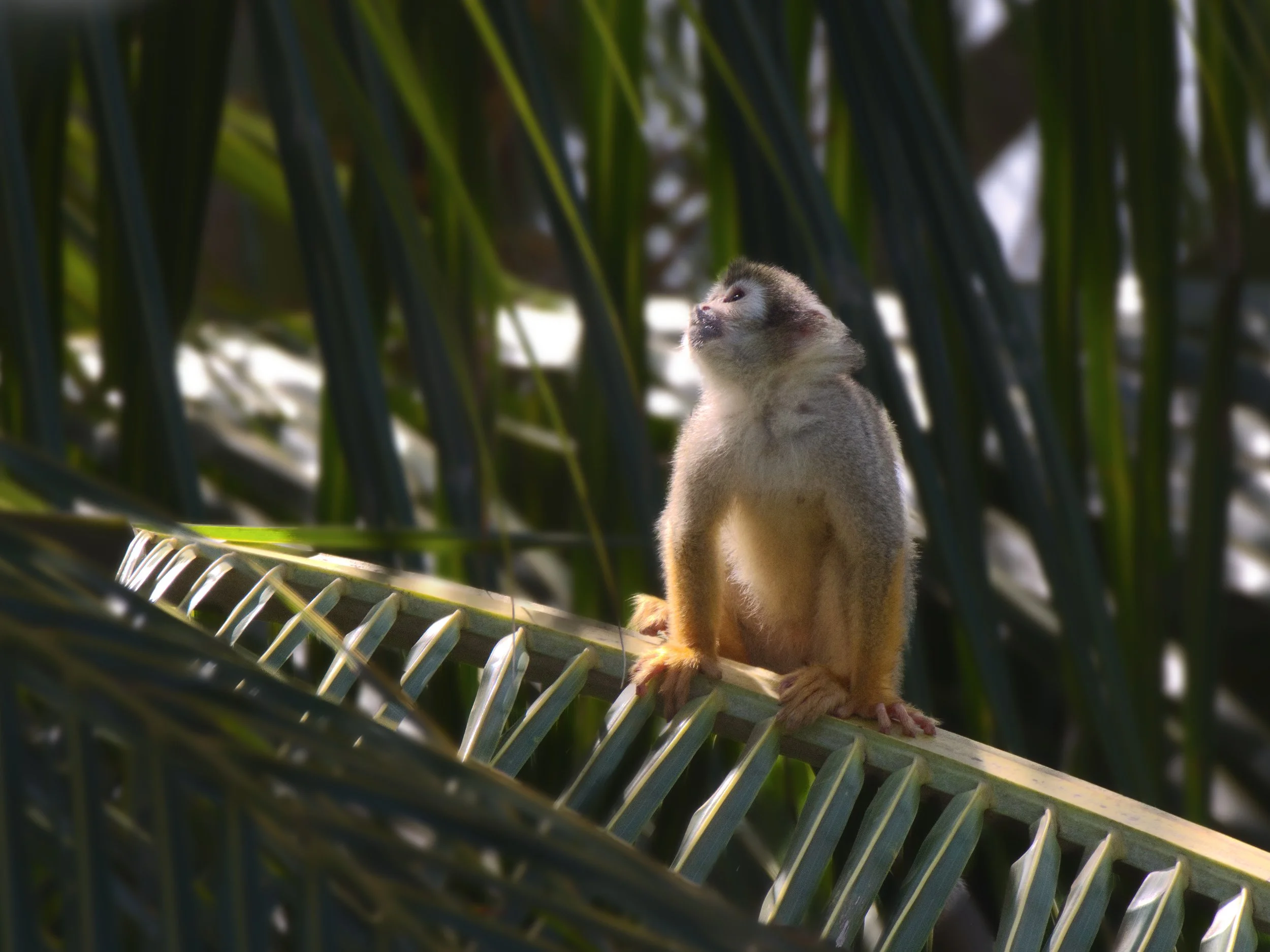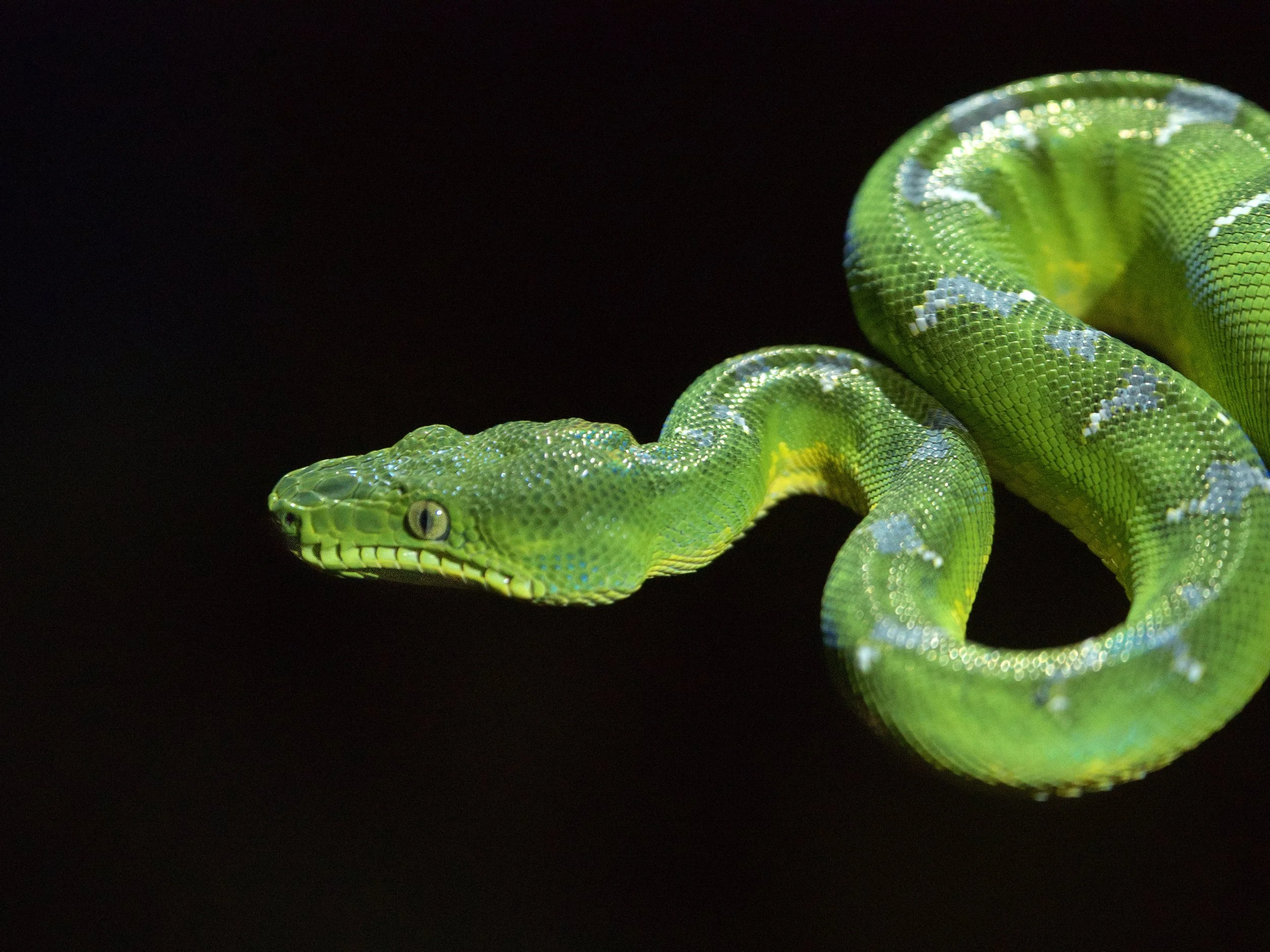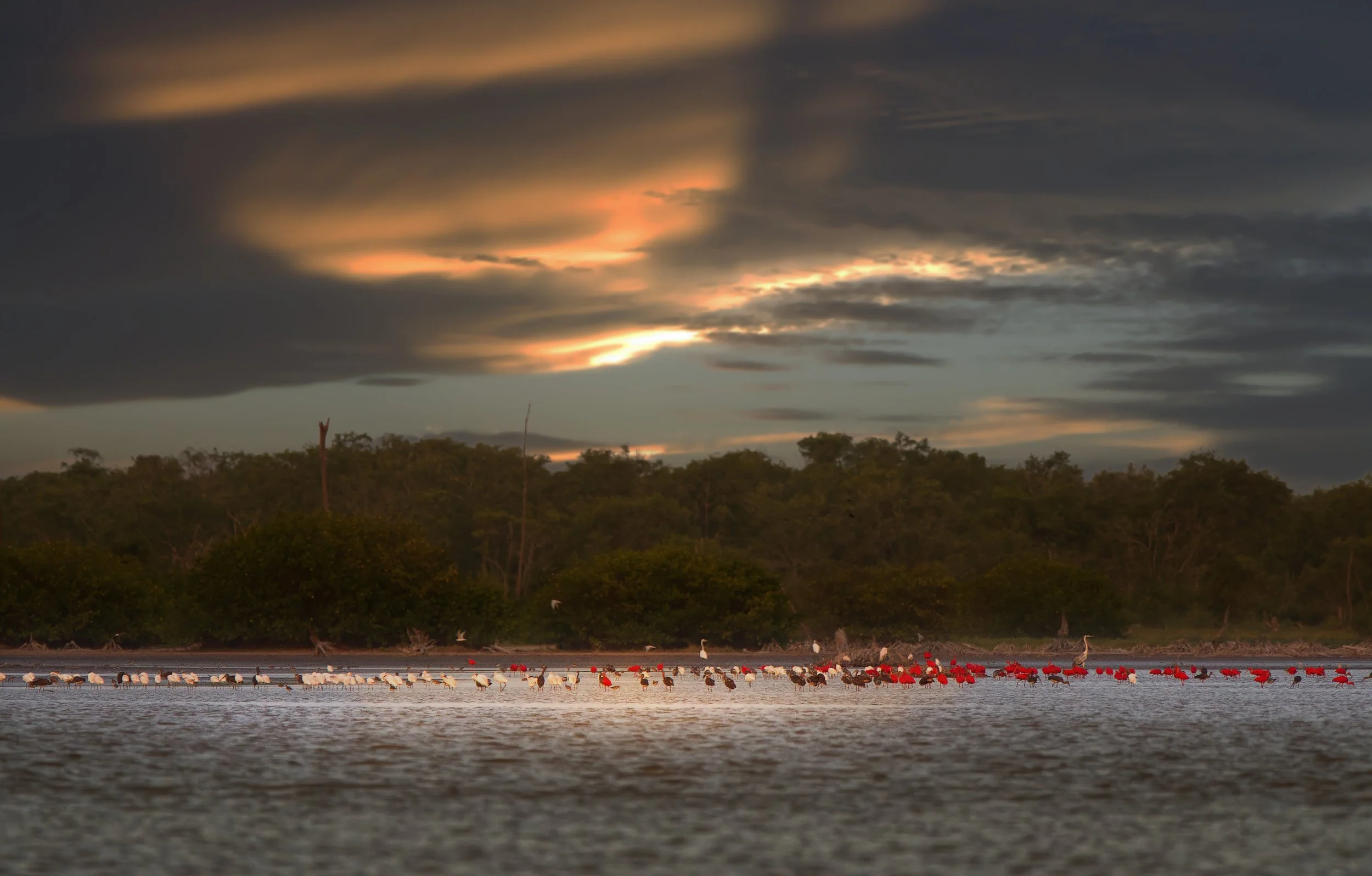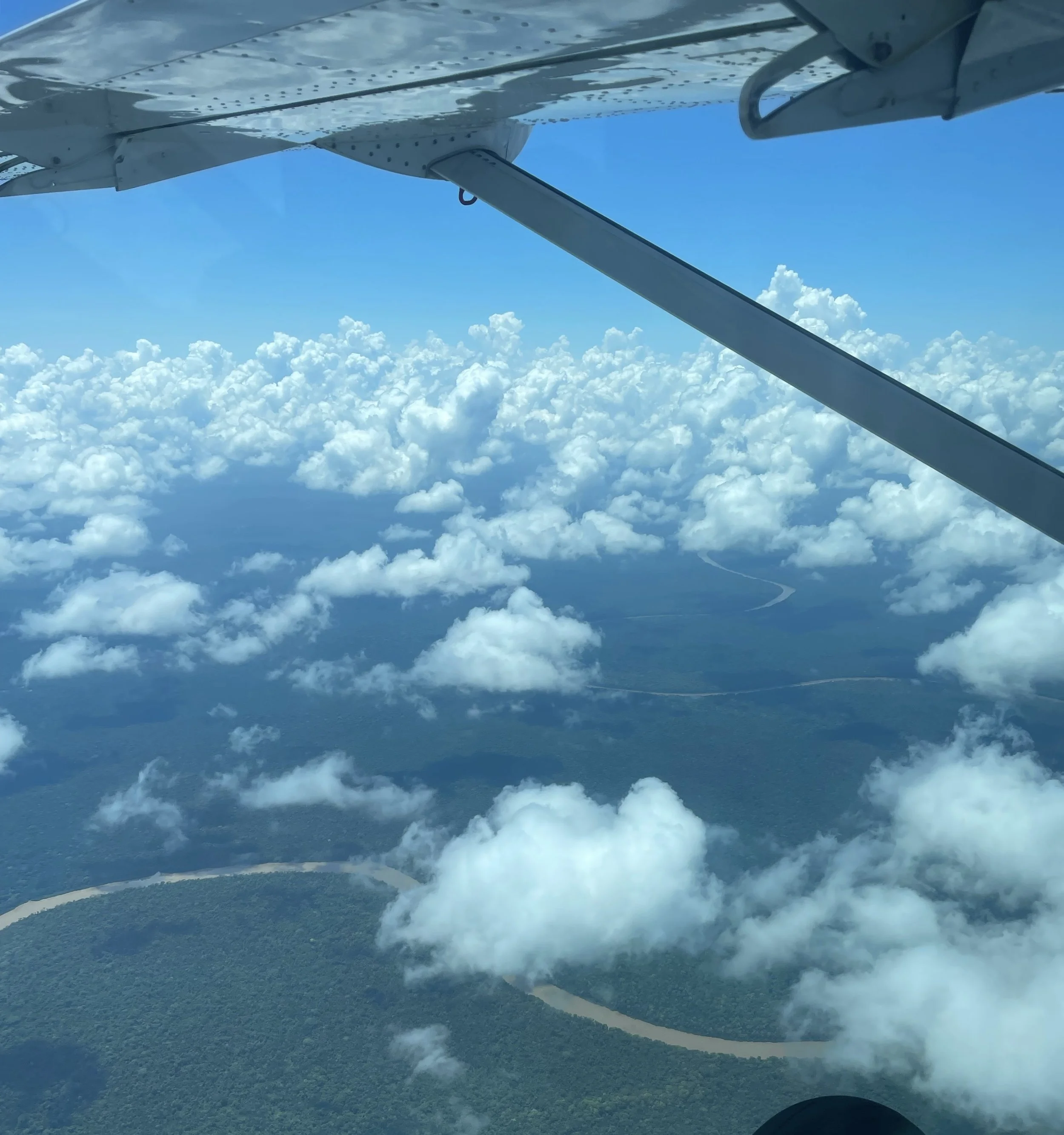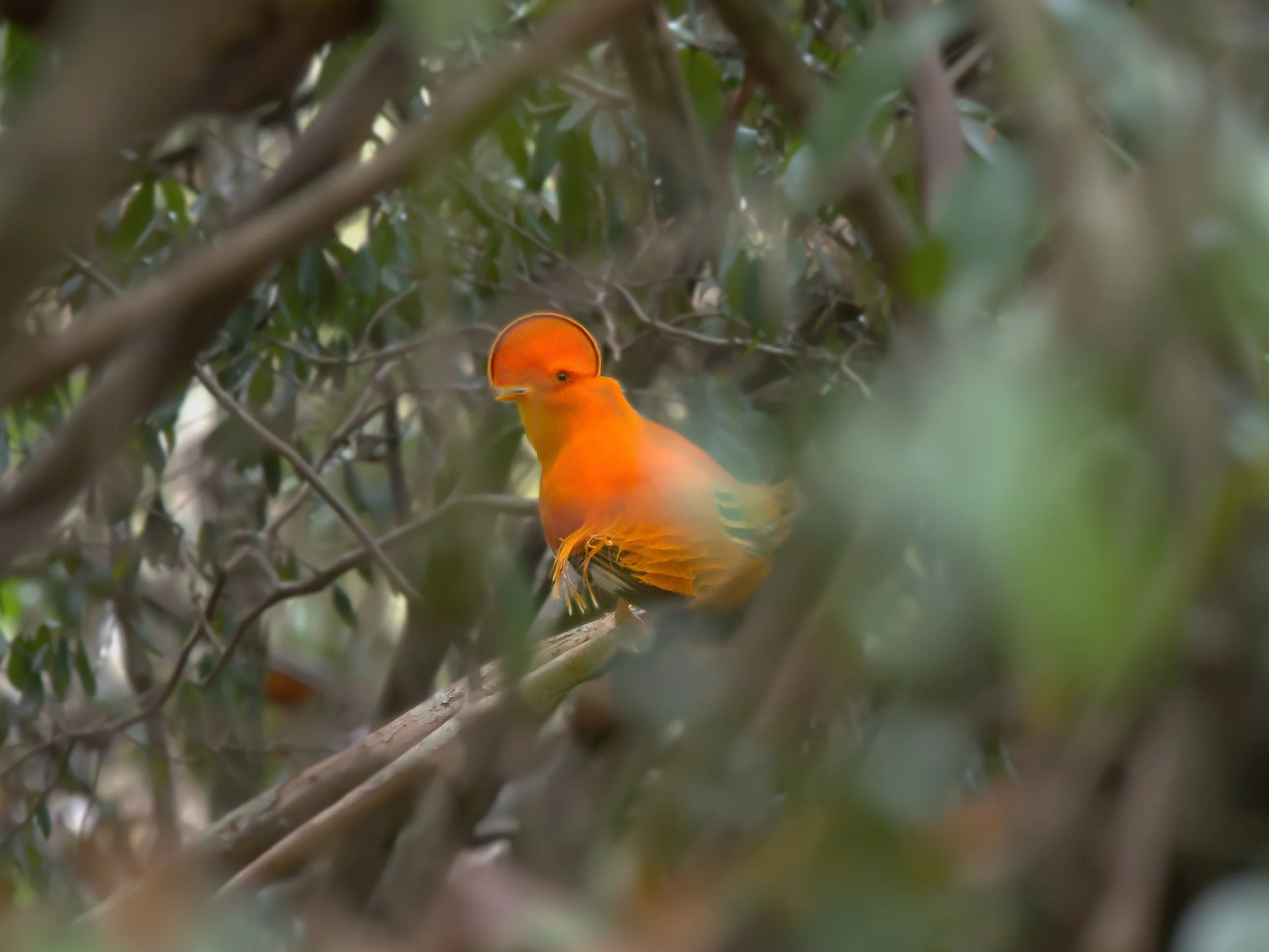The greenest country on Earth - why Suriname is one of the most underrated destinations for wildlife travel
Most people have never heard of Suriname – let alone considered it as a travel destination. Tucked between Guyana and French Guiana on the northeastern shoulder of South America, this small, ex-Dutch colony sits entirely within the Guiana Shield – one of the most biologically rich and least disturbed regions on the continent. It forms part of the Amazon biome, but lies outside the main river system, and as a result, it’s often overlooked in favour of its larger, more familiar neighbours in Brazil, Colombia, Peru, Bolivia and Ecuador.
That’s a mistake.
Suriname currently boasts the highest percentage forest cover on Earth – over 93% of the country remains covered in natural vegetation, most of which is good quality, primary forest. Though it’s the smallest independent nation in South America, it’s not small. Suriname is larger than England and Wales combined, but with a population of just 628,000 – most of whom live along the coast. Vast tracts of the interior are virtually untouched, and infrastructure remains limited. As such, unlike so many other places, wildlife can still be found in abundance outside of protected areas here. Jaguars, Bushmasters and Crested Eagles can be found a few hundred metres from the international airport, and you can see monkeys, toucans and snakes a plenty within Paramaribo’s city limits. Outside of the capital is mostly remote, underdeveloped, and in many places completely off-grid – which makes it a gift for adventurous wildlife travellers.
Culturally, Suriname is an odd little place that feels far more aligned with the Caribbean as opposed to mainland South American, with a heavy cultural influence from Indonesia and West Africa. You’ll hear Dutch, Sranan Tongo, and English in a single conversation. Saoto soup and roti are as common as fried plantain. Paramaribo, the capital, is a UNESCO World Heritage Site with stilted wooden houses, colonial architecture and vultures circling over tin roofs.
The wildlife here is every bit as exciting as the landscape. The country’s ecosystems range from coastal mangroves to flooded savannah-wetland mosaics to dense lowland rainforest. And while it doesn’t offer the ‘easy wins’ of a canopy tower in Ecuador or a jaguar cruise in the Pantanal, what it does offer is something far rarer: true wilderness, relatively free of tourists and red tape.
The next few years may be pivotal. Eco-tourism is still in its infancy here, and much of the local population hasn’t yet seen its potential. But things are shifting. Many of local guides were once hunters. Communities are starting to engage. And for now, the window is still open.
This piece is a look at a few of Suriname’s wildlife hotspots – from rainforest outposts like Brownsberg and Kabalebo, to mangrove-fringed wetlands and complex river systems. If you’re after somewhere different, raw, and full of wildlife – this might just be the best place you’ve never thought to visit.
White-throated Toucan
Peperpot Nature Park: Easy Access, High Density
Just 20-30 minutes from downtown Paramaribo, Peperpot Nature Park is a protected pocket of regenerating rainforest reclaimed from an old plantation. With flat trails, edge habitat, and accessible canopy views, it offers some of the easiest wildlife watching in Suriname – and arguably, in all of South America. Despite sitting on the urban fringe, wildlife density is remarkably high.
Terrain & Access:
The main trails are well maintained – wide, flat, and easy to navigate. Mornings are particularly productive, but spotlighting at night can be excellent too. A canopy tower offers eye-level views of the forest – ideal for birders.
Birds:
Excellent, accessible birding hotspot, with more than 270 recorded species. Notable highlights include Blood-coloured Woodpecker, Arrowhead Piculet (Suriname’s only endemic), Cream-coloured Woodpecker, Green-backed Trogon, Green-tailed Jacamar, Straight-billed Woodcreeper, Ashy-headed Greenlet, Painted Tody-Flycatcher, Spotted Puffbird, and Black-spotted Barbet.
Mammals:
Peperpot is arguably the easiest place in the world to see Pale-throated Three-toed Sloth – visible right from the main trail. Guianan Squirrel Monkeys and Brown Capuchins are common and confiding, offering excellent photographic opportunities. Red-rumped Agouti are also abundant. Night walks often turn up Amazonian Long-tailed Porcupine, Grey Four-eyed Opossum, Southern Opossum, and mouse opossums. Though less frequent, Giant Anteater and Lowland Paca are also sometimes seen. Rarer species include Silky Anteater, Ocelot, Margay, and Jaguarundi.
Herps:
An excellent site for herping, especially at night. Labaria (Bothrops atrox (also known as Common Lancehead)) are regularly encountered and care should be taken when walking on the trails. Other key species here include Suriname Toad (Pipa pipa), Brown-banded Water Snake (Helicops angulatus), Parrot Snake (Leptophis ahaetulla), and various Keelback sp. (Chironius sp.). During the day, Gold Tegu (Tupinambis teguixin) and Giant Ameiva (Ameiva ameiva) are common.
Guianan Squirrel Monkey
Brownsberg: Primates, trumpeters and tree boas
Located on a forested plateau overlooking the Brokopondo Reservoir, Brownsberg offers some of the highest wildlife density in Suriname. Though basic in infrastructure and challenging to access, it’s one of the country’s best sites for primates, interior birding, and herping. Few places offer such a strong combination of target species in such a compact area.
Terrain & Access:
The access road is steep, deeply rutted, and often in poor condition – especially after rain. A proper 4WD and experienced guide is essential. Accommodation on site is very basic, with no hot water, no fans, and no Wi-Fi. However, visitors are free to walk trails day and night without restriction, and those who make the effort are usually well rewarded.
Birds:
With over 400 species recorded, Brownsberg is one of Suriname’s top birding sites. It’s arguably the best place in the world to see Grey-winged Trumpeter - a key draw for birders. Antbirds are diverse and often vocal, and the ethereal song of the Musician Wren is commonly heard in the understory. Although there are no feeders, flowering trees can bring in 10+ hummingbird species in a single morning, with Long-tailed Hermit, Black-eared Fairy and Tufted Coquette among the regulars. It’s also excellent for raptors, including Swallow-tailed Kite, Lined Forest Falcon, White Hawk, Red-throated Caracara, and Ornate Hawk-eagle, among others. Further possible highlights include Guianan Red Cotinga, Red-and-black Grosbeak, Ringed Woodpecker, Collared and Black-tailed Trogon, Guianan Toucanet, several manakin species, and Thrush-like Antpitta. Nocturnal birding is also productive, with both Spectacled Owl and Foothill Screech Owl present.
Grey-winged Trumpeter
Mammals:
Brownsberg is a key site for primates, with all eight of Suriname’s species recorded – nearly all of them endemic to the Guiana Shield. White-faced Saki is a standout, with males showing their distinctive pale facial mask. Bearded Saki is trickier to find, but this remains one of the best places to see it. Chestnut Capuchin, a recently split species, is another speciality here, alongside Guianan Red Howler and Red-faced (Guiana) Spider Monkey. When the trees around the lodging are in fruit, sakis often feed nearby, offering excellent photographic opportunities. Other commonly seen mammals include Pale-throated and Linnaeus’s Two-toed Sloths, Red-rumped Agouti, and South American Coati. Nocturnal activity can be very productive, with Kinkajou, Amazonian Long-tailed Porcupine, and several species of opossum frequently encountered. Lowland Paca often puts in an appearance, while Nine-banded and Guiana Shield Long-nosed Armadillos occasionally turn up along forest trails. More rarely, cats such as Ocelot are seen.
Herps:
One of the most famous herping sites in Suriname, Brownsberg is particularly good for snakes – especially two key targets: Amazon Palm Pit Viper (Bothrops bilineatus) and Emerald Tree Boa (Corallus caninus). Paradoxically, herping is often best during the wet season, when access is at its most difficult and parts of the road become impassable. Dwarf Caimans and frogs such as Phyllomedusa species are frequently found in roadside pools. Dyeing Poison Frog (Dendrobates tinctorius), Three-striped Poison Frog (Ameerega trivittata), and Surinam Horned Frog (Ceratophrys cornuta) are also more active after rain.
Bigi Pan (Nickerie): Waterbird central
Located in Suriname’s northwest, near the border with Guyana, Bigi Pan is a vast mosaic of mangroves, lagoons, and brackish wetlands stretching inland from the Atlantic coast. The name literally means “big lake” in Sranan Tongo. Known for its dramatic skies and shallow waters, the area is only accessible by boat – gliding through narrow creeks and open water, surrounded by feeding herons, egrets, and waders.
Terrain & Access:
Bigi Pan is only accessible by boat, so booking a tour is essential. Access is from near Nieuw Nickerie (a 3-4 hour overland drive from Paramaribo), and visits can be arranged through local operators or directly with one of the lake’s lodges. Several accommodation options are available, but the standout is the relatively new Akira Overwater Ecolodge. Excursions typically run in the early morning and late afternoon – timed for sunrise and sunset – using open, motorised canoes. During prolonged drought, the lake can dry up entirely, making access impossible. The best time to visit is when water levels are low but still navigable – usually toward the end of the long dry season, when bird concentrations are at their peak and conditions remain passable.
Birds:
Bigi Pan is one of Suriname’s premier wetland birding sites. Over 200 species have been recorded, with waterbirds, waders, and raptors the main draw. At certain times of the year hundreds of Scarlet Ibis return in dramatic numbers at sunset, painting the sky and mangroves a vivid red. Other regular species include Black Skimmer, Least Sandpiper, Semi-palmated, Black-bellied, and Wilson’s Plovers, Black-necked Stilt, White-cheeked Pintail, Black-bellied Whistling-duck, Large-billed and Yellow-billed Tern, Anhinga, Roseate Spoonbill, and American Flamingo. Raptors are well represented too, particularly Snail Kite, Black-collared Hawk, Osprey and the striking Great Black Hawk. The surrounding mangroves support species such as Straight-billed Woodcreeper, Mangrove Cuckoo, Limpkin, Greater Ani and several woodpecker and kingfisher species. A Great Horned Owl often roosts here.
Bigi Pan’s birding is best in the early morning or late afternoon, when light is soft and activity peaks. The experience here is less about chasing rarities and more about the spectacle – vast skies, reflections on still water, and birds moving in flocks across the horizon.
Others:
Birds are the primary focus here. However, Greater Bulldog Bats are common at night, as are Spectacled Caiman (Caiman crocodilus) and some snake species such as Amazon Tree Boa (Corallus hortulanus) and Coastal House Snake (Thamnodynastes pallidus)
Bigi Pan
Kabalebo: Access to the remote interior
Kabalebo Nature Resort is located deep in the uninhabited pristine lowland forests of west Suriname, and offers a rare combination of comfort and genuine remoteness. Accessible only by small aircraft, it sits along the Kabalebo River, surrounded by hundreds of miles of untouched lowland rainforest. A rare window into the Amazon – as it has existed for thousands of years.
Terrain & Access:
Kabalebo is only accessible via a short charter flight from Paramaribo, the last 40 minutes or so is flying over completely untouched jungle. The lodge itself is surprisingly well-appointed for such an isolated location – offering clean and comfortable en suite accommodation, solar-powered electricity, a swimming pool and even Wi-Fi. It’s the most “established” eco-lodge in Suriname. Wildlife excursions take place by boat or on foot. Trails vary in difficulty, and the local guides are trained with a focus on generalist wildlife interpretation and nature exploration, rather than niche expertise. Most regular visitors are not naturalists.
Birds:
Kabalebo is superb for birding, with access to riverine, forest edge and interior trails. Macaws and parrots are particularly well represented, with Scarlet, Red-and-green, and Chestnut-fronted Macaws, Red-fan Parrot, and Caica Parrot all regular. The airstrip is one of the easiest locations for birding. Toucans and aracaris are common, with five species present, and the surrounding trails offer a good mix of antbirds, manakins, and flycatchers. Harpy Eagle is a major target here. While there are no known monitored nests (unlike in Brazil or Panama), sightings occur on average about once every two weeks, usually along quieter upriver stretches. Other raptor targets include Ornate Hawk-Eagle, Black-and-white Hawk-Eagle, and Black-faced Hawk, alongside Spectacled and Crested Owls. Further highlights include Guianan Puffbird, Black and Red-throated Caracara, Crimson Topaz, Green-and-rufous Kingfisher, Capped Heron, Black Curassow, Paradise Jacamar, and Guianan Trogon, to name a few.
Mammals:
Kabalebo is the most reliable place in Suriname (and perhaps anywhere) to see Lowland Tapir, with several individuals frequently visiting the lodge grounds. These animals are wild but habituated, and unfazed by people. Other likely species around the airstrip include Red-rumped Agouti, Capybara and Red Brocket Deer. As this is pristine forest, theoretically anything might show – Southern Tamandua, Tayra, and even Puma and Ocelot have seen spotted crossing in recent years. Boat trips offer a good chance to see Giant Otter, often in family groups. Jaguar occurs in the area and is seen from time to time, particularly along quiet stretches of river, although sightings remain relatively uncommon.
Herps:
Reptiles and amphibians here are highly diverse, though most sightings are opportunistic rather than targeted. Green Iguanas (Iguana iguana) are common and easily observed basking or roosting. Red-footed Tortoise (Chelonoidis carbonarius) is frequently encountered, as are Spectacled Caiman (Caiman crocodilus). A striking morph of Dyeing Poison Frog (Dendrobates tinctorius) occurs deeper in the forest, though sightings around the lodge itself are rare and usually dependent on habitat condition and rainfall. Green Anaconda (Eunectes murinus) is sometimes recorded along slower stretches of the river, while other rarities include Rainbow Boa (Epicrates cenchria), Emerald Tree Boa (Corallus caninus), and even the brilliantly coloured arboreal Green Thornytail Iguana (Uracentron azureum).
Flying to Kabalebo
Maratakka River: A remote waterway
Lying well off the standard circuit, the Maratakka River is one of Suriname’s least-known wildlife destinations. The river flows through a largely intact corridor of swamp forest, primary forest, savannah, and freshwater lagoon, offering superb habitat for riverine mammals and birds. With limited formal infrastructure and almost no tourism footprint, the Maratakka is well worth a visit for the adventurous.
Terrain & Access:
It’s a 3 hour overland drive to Wageningen, and then access to the river is by motorised traditional canoe. This is an undeveloped area with limited options for accommodation. There are no formal trails, and all wildlife watching is done from the water or along banks and creek edges. The best time to visit is typically during the dry season, when water levels are lower and viewing conditions are ideal. Patience, flexibility, and an experienced boatman are essential.
Birds:
The Maratakka is strong for a mix of open-country, riverine and lowland forest birds. It is one of the few places in Suriname to see Toco Toucan. Blue-and-yellow Macaw, Bare-necked Fruitcrow, Crimson-crested Woodpecker, Cocoi Heron, and Black-collared Hawk are all regular, while creeks and side channels offer good chances for Green-and-rufous Kingfisher, American Pygmy Kingfisher, Sungrebe, and possibly Agami Heron. Further possible highlights include Red-fan Parrot, Painted Parakeet, Blue-throated Piping Guan, Long-winged Harrier, Pied Puffbird, Guianan Trogon, Orange-breasted Falcon, Crane Hawk, and very occassionally Harpy and Crested Eagle.
Mammals:
This is arguably Suriname’s best location for both Giant Otter and West Indian Manatee. Capybara, Lowland Tapir and Red Brocket Deer are possible, but skittish and rarely seen in open daylight. Primate watching can be productive with all 8 species possible. Jaguar is present but sightings are rare.
Herps:
The mix of swamp forest, creeks, and open river makes it a productive site for aquatic and arboreal reptiles. The most notable target is Green Anaconda (Eunectes murinus), especially around breeding season. Amazon Tree Boa (Corallus hortulanus) is widespread and more regularly seen, often found coiled in overhanging vegetation above the river. Spectacled Caiman (Caiman crocodilus) is common throughout the system, while Smooth-fronted Caiman (Paleosuchus trigonatus) is also present.
Giant Otter
Fredberg: A birding paradise
Fredberg is one of the most exciting wildlife sites in Suriname – a privately managed forest reserve in the Sipaliwini District, and one of the few areas of interior lowland forest that can be accessed overland with relative ease. The area is known for its towering granite outcrop, extensive lowland rainforest, and incredible diversity of bird species, including many rarities.
Terrain & Access:
Fredberg is accessible by road from Paramaribo. The first few hours are on sealed road, with the final hour along a rough old logging track. Accommodation is simple, but has recently been renovated and expanded. En suite rooms with beds are available. Electricity is suplied in common areas only. The logging roads surrounding base camp are in poor condition, with deep ruts – a 4WD is essential. The optional on-foot climb up Fredberg mountain itself is steep and sweaty, but manageable for most visitors with reasonable fitness. Daytime heat can be intense, but early mornings and evenings are far more pleasant.
Birds:
In our opinion, Fredberg is one of the world’s great forest birding sites. It is home to several active Guianan Cock-of-the-rock leks, which are reliably active from December through April, though birds can be seen year-round. A purpose-built blind offers excellent viewing and photography opportunities with minimal disturbance. Capuchinbird also has several leks here. The surrounding forest, a mix of mature and selectively logged secondary growth, provides outstanding birding along roads, trails, and ridge edges. Among the many highlights are Blue-backed Tanager, Pompadour Cotinga, Guianan Toucanet, Amazonian Motmot, White-chested Puffbird, Red-and-black Grosbeak, Red-fan Parrot, Painted Parakeet, Guianan Puffbird, Paradise Jacamar, and Glossy-backed Becard. The striking Crimson Fruitcrow is also regularly seen. Rarities such as Band-tailed Antshrike, Dusky Purpletuft, Zigzag Heron and even Harpy Eagle are all known from the area.
Understorey birding can be excellent, with Musicican Wren, Spotted and Thrush-like Antpitta, Rufous-capped and Black-faced Antthrush, Ferruginous-backed Antbird, and Rufous-bellied Antwren among the more sought-after targets. Mixed flocks often produce Long-tailed Tyrant, and a spread of woodcreepers, tanagers and woodpeckers. Night birding is productive, with four Potoo species and a number of owls and nightjars possible. Five species of toucans occur, and hummingbird activity around the lodge can be intense, with regular visits from Green-tailed Goldenthroat, Tufted Coquette, Amethyst Woodstar, Fork-tailed Woodnymph, among others.
Mammals:
Mammals can be flighty at Fredberg due to hunting. However, with patience, quiet movement and luck, any number of star species are possible. Primates, including Guianan Red Howlers and Golden-handed Tamarins are most frequently encountered, along with Red-rumped Agouti. This is also one of the best places to see Guianan Bearded Saki and the rare Chestnut Capuchin. Kinkajous can be abundant and often active in the Cecropia trees. Night walks can also turn up such species as Bare-tailed Woolly and Grey Four-eyed Opossum. Though sightings remain exceedingly rare, Fredberg is one of the few locations where Jaguar, Bush Dog, and Greater Grison have all been recorded by visitors in recent years.
Herps:
Fredberg is a great location for herping. The rocky outcrops, mixed forest structure, and proximity to water all contribute to excellent diversity. Boas are well represented, with Boa Constrictor (Boa constrictor), Slender Tree Boa (Corallus hortulanus), and the rarer Emerald Tree Boa (Corallus caninus) all recorded. Bushmaster (Lachesis muta) is also known from the area. Common Lancehead (Bothrops atrox), Linnaeus’s Sipo (Chironius exoletus), and Parrot Snake (Leptophis ahaetulla) are all relatively common. Green Anaconda (Eunectes murinus) has been recorded in the river near camp. Lizards include Monkey Lizard (Polychrus marmoratus), Collared Tree Runner (Plica plica), Rainbow Whiptail (Cnemidophorus lemniscatus), Lava Lizard (Tropidurus hispidus), and the impressive Gold Tegu (Tupinambis teguixin). The rare Green Thornytail Iguana (Uracentron azureum) is known from the area.
Guianan Cock-of-the-rock

